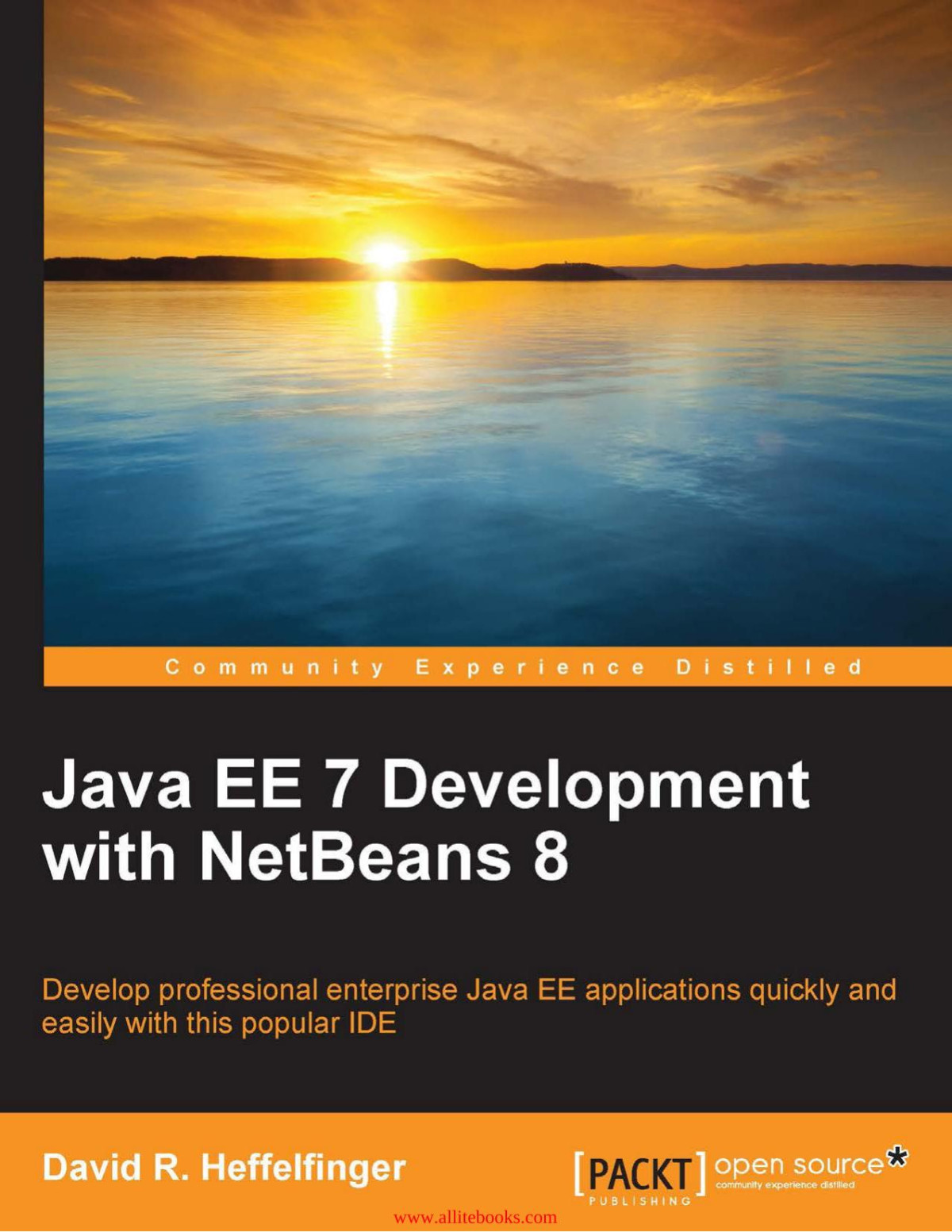

Most ebook files are in PDF format, so you can easily read them using various software such as Foxit Reader or directly on the Google Chrome browser.
Some ebook files are released by publishers in other formats such as .awz, .mobi, .epub, .fb2, etc. You may need to install specific software to read these formats on mobile/PC, such as Calibre.
Please read the tutorial at this link. https://ebooknice.com/page/post?id=faq
We offer FREE conversion to the popular formats you request; however, this may take some time. Therefore, right after payment, please email us, and we will try to provide the service as quickly as possible.
For some exceptional file formats or broken links (if any), please refrain from opening any disputes. Instead, email us first, and we will try to assist within a maximum of 6 hours.
EbookNice Team

Status:
Available0.0
0 reviews(Ebook) Java EE 7 Development with NetBeans 8 3rd Edition by David R Heffelfinger - Ebook PDF Instant Download/Delivery: 9781783983520 ,1783983523
Full download (Ebook) Java EE 7 Development with NetBeans 8 3rd Edition after payment

Product details:
ISBN 10: 1783983523
ISBN 13: 9781783983520
Author: David R Heffelfinger
The book is aimed at Java developers who wish to develop Java EE applications while taking advantage of NetBeans functionality to automate repetitive tasks. Familiarity with NetBeans or Java EE is not assumed.
The book is aimed at Java developers who wish to develop Java EE applications while taking advantage of NetBeans functionality to automate repetitive tasks. Familiarity with NetBeans or Java EE is not assumed.
(Ebook) Java EE 7 Development with NetBeans 8 3rd Edition Table of contents:
1. Getting Started with NetBeans
Introduction
Obtaining NetBeans
Installing NetBeans
Microsoft Windows
Mac OS X
Linux
Other platforms
Installation procedure
Starting NetBeans for the first time
Configuring NetBeans for Java EE development
Integrating NetBeans with a third-party application server
Integrating NetBeans with a third-party RDBMS
Adding a JDBC driver to NetBeans
Connecting to a third-party RDBMS
Deploying our first application
NetBeans tips for effective development
Code completion
Code templates
Keyboard shortcuts
Understanding NetBeans visual cues
Accelerated HTML5 development support
Summary
2. Developing Web Applications Using JavaServer Faces 2.2
Introduction to JavaServer Faces
Developing our first JSF application
Creating a new JSF project
Modifying our page to capture user data
Creating our CDI named bean
Implementing the confirmation page
Executing our application
JSF validation
Facelets templating
Adding the Facelets template
Using the template
Resource library contracts
Composite components
Faces flows
HTML5 support
HTML5-friendly markup
Pass-through attributes
Summary
3. JSF Component Libraries
Using PrimeFaces components in our JSF applications
Using ICEfaces components in our JSF applications
Using RichFaces components in our JSF applications
Summary
4. Interacting with Databases through the Java Persistence API
Creating our first JPA entity
Adding persistent fields to our entity
Creating a data access object
Automated generation of JPA entities
Named queries and JPQL
Bean Validation
Entity relationships
Generating JSF applications from JPA entities
Summary
5. Implementing the Business Tier with Session Beans
Introducing session beans
Creating a session bean in NetBeans
Accessing the bean from a client
Executing the client
Session bean transaction management
Implementing aspect-oriented programming with interceptors
Implementing the Interceptor class
Decorating the EJB with the @Interceptors annotations
The EJB Timer service
Generating session beans from JPA entities
Summary
6. Contexts and Dependency Injection
Introduction to CDI
Qualifiers
Stereotypes
Interceptor binding types
Custom scopes
Summary
7. Messaging with JMS and Message-driven Beans
Introduction to JMS
Creating JMS resources from NetBeans
Implementing a JMS message producer
Consuming JMS messages with message-driven beans
Seeing our messaging application in action
Summary
8. Java API for JSON Processing
The JSON-P object model API
Generating JSON data with the JSON-P object model API
Our example in action
Parsing JSON data with the JSON-P object model API
The JSON-P streaming API
Generating JSON data with the JSON-P streaming API
Parsing JSON data with the JSON-P streaming API
Summary
9. Java API for WebSocket
Examining the WebSocket code using samples included with NetBeans
The sample Echo application in action
Examining the generated Java code
Examining the generated JavaScript code
Building our own WebSocket applications
Developing the user interface
Developing the WebSocket server endpoint
Implementing WebSocket functionality on the client
Summary
10. RESTful Web Services with JAX-RS
Generating a RESTful web service from an existing database
Analyzing the generated code
Testing our RESTful web service
Generating RESTful Java client code
Generating RESTful JavaScript clients for our RESTful web services
Summary
11. SOAP Web Services with JAX-WS
Introduction to web services
Creating a simple web service
Testing our web service
Developing a client for our web service
Exposing EJBs as web services
Implementing new web services as EJBs
Exposing existing EJBs as web services
Creating a web service from an existing WSDL
Summary
Index
People also search for (Ebook) Java EE 7 Development with NetBeans 8 3rd Edition:
java 7 e un 8
que netbeans debo descargar
netbeans 17 rc
is netbeans better than eclipse
is netbeans dead
Tags: David R Heffelfinger, Java EE, Development, NetBeans